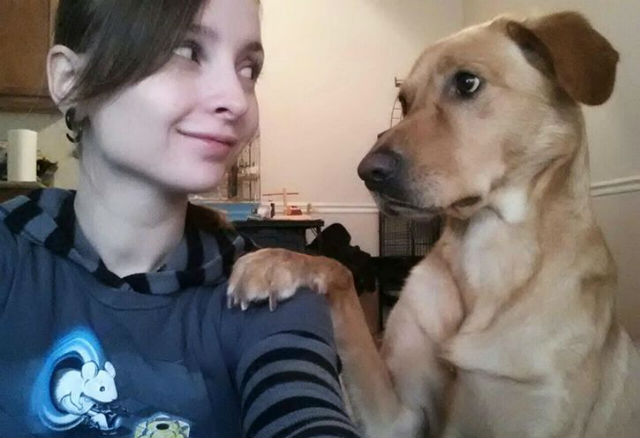A research team at Emory University set out to prove one way or another whether dogs recognize (and get excited about) human faces as a result of familiarity and not just the expectation of a reward. 6 astoundingly patient dogs were trained to lie completely still in an fMRI machine, with no sedation or restraints, long enough for the scientists to scan their brains.
What they found surprised me, quite frankly, even though I feel like I knew the answer all along. See, as much as I love my dogs, I always wonder if they seek my attention simply because they know they’ll get treats, pets, or verbal praise.
[bp_related_article]
As much as I want to believe they love us as humans do, a part of me has always been skeptical.
Senior author of the study and Emory neuroscientist, Gregory Berns, says:
We were focusing on an area of the brain that we know, in primates and humans, responds specifically to faces, to see if dogs have the same thing. And apparently, they do.
The scientists showed the dogs images of human faces, canine faces, and ordinary objects. When they saw either of the faces, the part of the brain associated with facial recognition and response lit up like a Christmas tree.
Interestingly, the “reward center” region of the brain was unaffected, proving that us dog servants parents, are not, in fact, living treat dispensers. At least not for everyone.
“For social animals,” the study reports, “faces are immensely important stimuli, carrying a wealth of information, such as identity, sex, age, emotions, and communicative intentions of other individuals.”
So your mug essentially grazes the surface of a dating profile… “Okay, this one’s female–*sniffs*–25 years old–*sniffs*–having a pretty good day–*sniffs*–looks like she wants to rub my belly.”
In response to the limited sample size of research subjects, Berns comments:
This is kind of more of an ‘existence’ question. Can we demonstrate in any dogs that they have these face regions? And the answer is yes. So the existence is there … It really wouldn’t matter if only one dog had it. The fact that we can find it in a dog, let alone six dogs, shows it’s not something that’s specific to humans or monkeys or apes.
And in a different study from the University of Helsinki, scientists discovered that our dog’s understanding of our facial expressions goes even deeper. They pay extra attention to our eyes, for instance, because they know the eyes reveal more about our feelings than our nose or ears.


And they distinctly reacted to different facial expressions, especially “threatening” facial expressions. For the first time, we have evidence that dogs have patterns of emotional recognition when they look at our faces. They know exactly where to look when they want to read our feelings.
For all the skeptics like me, and for those who knew all of this the entire time and tried to tell us, rest assured: your dog loves you for you, and maybe the occasional ear scratch.
For more details on the study, check out Business Insider and PeerJ for the written journal.











